The Byzantine Empire Art and Architecture Compared to Medieval Europe
Byzantine Compages is one of the most influential building styles of the past 1500 years. Byzantine buildings pushed the possibilities of construction, engineering, and art. Information technology would exist incommunicable to completely clarify the vast amount of buildings that the Byzantines left behind, but this list volition endeavor to shed some calorie-free on this extraordinary time in architectural history.
Who were the Byzantines?
But offset, who were the Byzantines? What was the Byzantine Empire? These are very loaded questions amid historians. In unproblematic terms, the Byzantines were the remnants of the Eastern Roman Empire which survived from the fiveth century CE until the fall of Constantinople in 1453 CE. Many people ignore the term "Byzantine" however and simply phone call them the Romans.
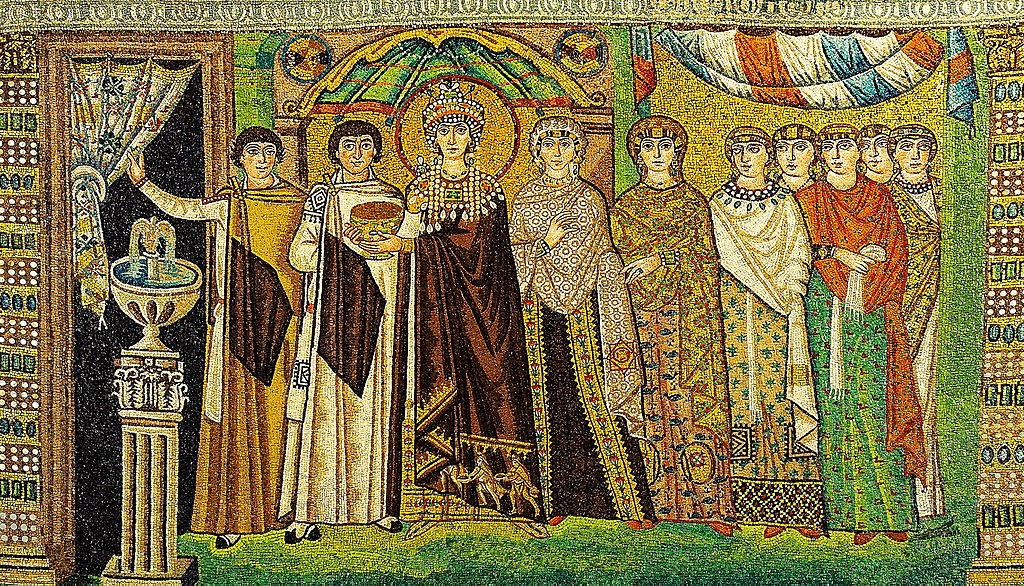
Photo by Petar Milošević from Wikimedia Eatables
The Romans and Byzantines were very similar. They had a similar government structure, similar cultural values, and they both were some of the virtually influential powers in their fourth dimension. Even the Byzantine rulers referred to themselves as Romans, and the term "Byzantine Empire" didn't fifty-fifty emerge until long subsequently the empire fell in 1453.
Whether you prefer to think of them as the Romans, or the Byzantines, it's important to know the evolution of the empire over time. The Byzantine Empire was notably different than the Roman Empire in three major means: the majuscule was Constantinople, the empire mainly spoke Greek, (specially after the seventh century) and the majority of the population were Eastern Orthodox Christians.
Byzantine Architecture Characteristics

The most common unifying element in Byzantine Compages is the use of mosaics. Mosaics illustrated religious scenes and important historical figures. Byzantine Mosaics busy the walls and ceilings of many unlike churches from this time period. Byzantine craftsmen created mosaics not just for the Byzantine Empire, merely also for many churches that were built by the Venetians, and the Norman Kings of Sicily. One of the largest collections of these mosaics is at the Hagia Sophia in Istanbul. The Hagia Sophia contains hundreds of different mosaics, many of which are covered up past a layer of plaster that was put upward by the Ottoman Empire.

Round Arches
Photo by Ernesto Sguotti from Wikimedia Commons
The circular arch, which was highly utilized by the Ancient Romans, remained an important feature in Byzantine Compages long subsequently the fall of the Western Roman Empire. Circular arches were likewise the main defining characteristic of the Romanesque Style which was heavily influenced by Byzantine works of architecture. The outside of the Basilica of San Vitale has circular curvation windows and buttresses. The Byzantines used circular arches to create the vast majority of the openings in their buildings and still used round arches long after much of Europe had adopted the pointed Gothic Curvation.

Roman and Greek Influences
Photo pastMarking Ahsmann from Wikimedia Eatables
Roman and Greek Compages, which had been effectually for centuries, were very important in the evolution of Byzantine Architecture. It's very clear in the column capitals constitute in many Byzantine buildings, which all evolved from the original "big three" types of Greek Columns: the Doric, Ionic, and Corinthian. This cavalcade at the Hagia Sophia all the same has the overall proportions of other Ancient Greek Columns, and you can even encounter traces of the scrolls found at the tops of Ionic Columns. But this column capital was carved in a uniquely Byzantine style, with dissimilar leaves, symbols, and insignias. These carvings have deep recesses between and behind them to give the overall sculpture a not bad deal of depth.
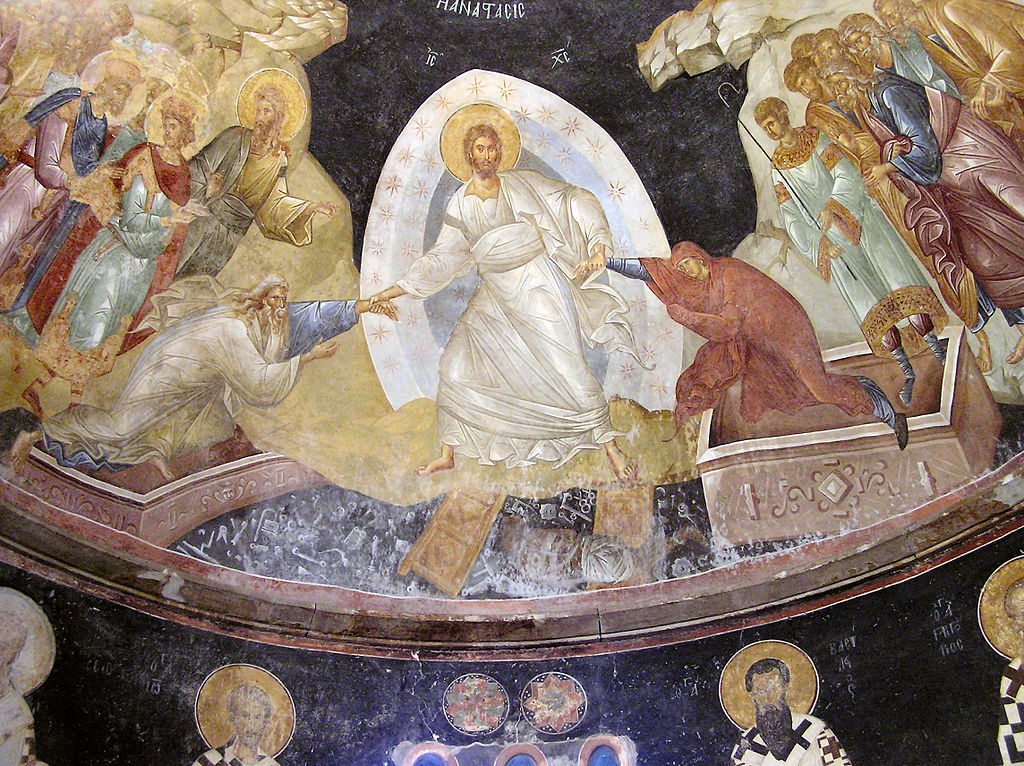
Orthodox Christian Influences
The Eastern Orthodox Church was based in Constantinople for over 1,000 years, so it's easy to see why Byzantine Compages was heavily influenced by this sect of Christianity. Eastern Orthodox fine art and Iconography are constitute throughout all Byzantine Churches. Well-nigh of the decorations within the Chora Church building in Istanbul were completed between 1315 and 1321; during a time when the Eastern Orthodox Faith had spread throughout Europe into modern-day Russia, Ukraine, and Bulgaria. The art of the Eastern Christians was drastically unlike than the more than rich and corrupt art of the Latin Christians in the West. The Eastern and Western Christians disagreed on what fine art was considered advisable, and that was a modest part of the feud that lead to the Cracking Schism of 1054.
Interested in Byzantine Compages? Check out some of our other related articles!
Types of Byzantine Churches
The earliest type of Byzantine Church is the Basilica Style. These churches characteristic a long linear space within the central nave. The Basilica Way evolved from the Roman Basilica which was a popular borough building within the Empire. Some of these Basilicas were built with 3 aisles, and other larger churches had five. The Basilica of Saint'Apollinare Nuovo and the Hagios Demetrios are two examples of churches that use this style. The Byzantine Basilica Style church building somewhen influenced later Latin Cross programme churches that were pop with the Catholic Church in Medieval Europe.
Later on, the Byzantines engineered a more innovative style of church. This new blueprint revolved around a large centralized gathering space. To exercise this the Byzantines created a massive pendentive dome, which is a dome that sits atop multiple arches over a square foundation. This mode of church evolved from older forms of buildings like Roman Mausoleums, and Roman rotunda-style temples. The Hagia Sophia and the Basilica of San Vitale are two examples of churches built in this style. This type of Byzantine Church heavily influenced later Orthodox Cathedrals which are often congenital in a Greek Cross Plan.
What are the best examples of Byzantine Architecture?
The Byzantines, similar the Aboriginal Romans, were master builders. They created incredible works of architecture all over their empire and across. They invented new building techniques, styles, and technologies. Byzantine Architecture exemplifies the power of their empire and shows how even during the time known as the "dark ages" much of the world was still avant-garde and inventive. This listing will effort to showcase some of the finest, most innovative, and impressive examples of Byzantine Compages; highlighting various buildings from throughout the former Byzantine Empire, in modern nations such as Greece, Turkey, and Italy.
1. Hagia Sophia – Istanbul, Marmara, Turkey
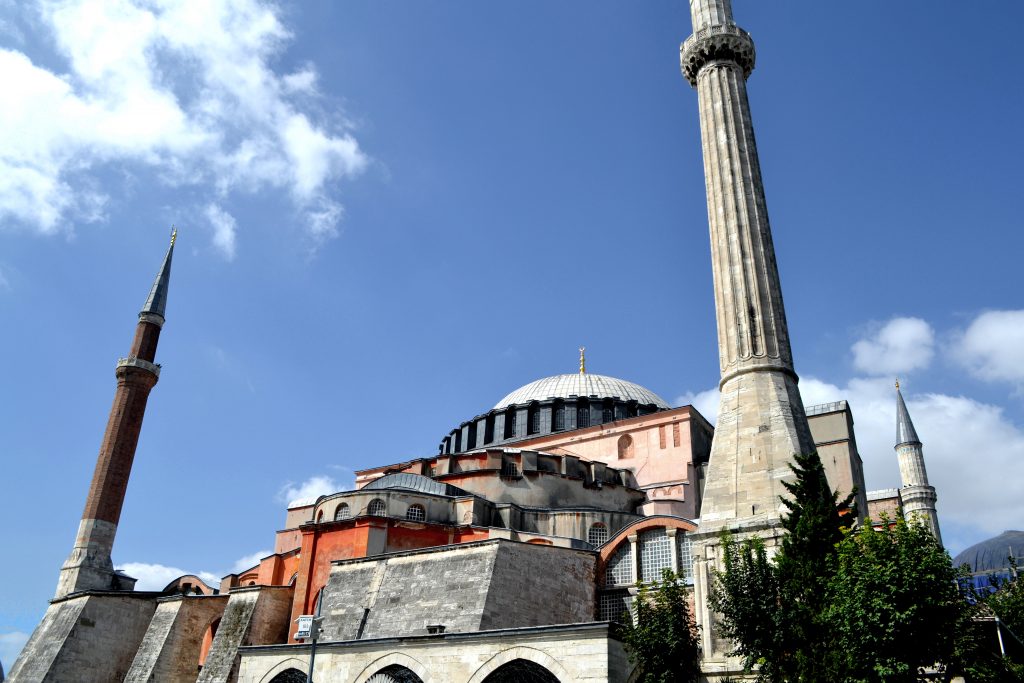
- Constructed: 537 CE
- Emperor: Justinian I
The Hagia Sophia was built under the reign of Emperor Justinian the Nifty, i of the most notable rulers of the Byzantines. This time flow is often regarded every bit a loftier point in Byzantine History. The nearly impressive fact virtually this building is that information technology was constructed in only 5 years and 10 months! This is incredible, specially when you consider that one thousand years later information technology was common for much smaller cathedrals in Europe to take 100s of years to build. Not merely was the church built so rapidly, but information technology was the world'southward largest building at the time of its completion.

The Dome of the Hagia Sophia is specially noteworthy. At the time of its completion, it was the largest dome in the earth, surpassing the dome of the Pantheon in Rome. It wasn't until the completion of Brunelleschi'southward dome at Florence Cathedral that the Hagia Sophia lost the title of "earth's largest dome." The Hagia Sophia was the leading Eastern Orthodox Church until 1453 when information technology was converted into a mosque by the Ottomans who took over Constantinople after defeating the Byzantines. The Ottoman Turks heavily modified the edifice, adding in multiple additions, prayer halls, and 4 big stone minarets.
2. Basilica of Saint'Apollinare Nuovo – Ravenna, Emilia-Romagna, Italian republic

- Constructed: 561 CE
- Emperor: Justinian I
Ravenna was conquered by the Byzantines in 540 CE, and they quickly made it their regional capital letter city on the Italian mainland. Although technically one could argue that the basilica isn't really Byzantine at all, since it was built past the Ostrogoth male monarch Theodoric the Dandy, but it however was heavily influenced past Byzantine architecture and many of the mosaics were completed past Byzantine Craftsmen. Shortly after the completion of the church, the Byzantines took Ravenna from the Ostrogoths, and they made several modifications to the church building to accommodate their own preferences. The plan of the church building matches the original linear program of an ancient Roman Basilica, with a long fundamental nave flanked by two parallel halls. The Byzantine Mosaics in the church are some of the all-time-preserved examples still in being. They draw various scenes from the bible as well as notable landmarks throughout Ravenna.
three. Walls of Constantinople – Istanbul, Marmara, Turkey

- Constructed: 324-448 CE
- Emperor: Constantine I & Theodosius Ii
The walls of Constantinople (Constantinople has been named Istanbul since 1923) were the final great fortification organization of antiquity. They were modified continuously over time just the major constructions were done by Constantine the Dandy in the 4th century, and Theodosius Two in the 5th century. The walls wrapped the unabridged city, creating a big state wall on the western border, and a smaller merely still formidable sea wall along the eastern, northern, and southern edges of the city. The body of water walls, which defended against naval assaults from the waters of the Bosphorus and Golden Horn were less impressive than the western land walls, and traces of them within modern-day Istanbul are often hard to find. The western country wall, which was constructed mainly by Theodosius Two from 404-458 CE, was a massive iii-tiered system of walls, towers, and moats that were a marvel of armed forces architecture. These walls are often referred to as the Theodosian Walls and are still largely intact today. They helped the Byzantine Empire defend Constantinople against countless sieges for about 1000 years. Finally, in 1453, The Ottoman Empire was able to conquer the city with the help of cannons after a 7-week siege.
4. Basilica of San Vitale – Ravenna, Emilia-Romagna, Italy
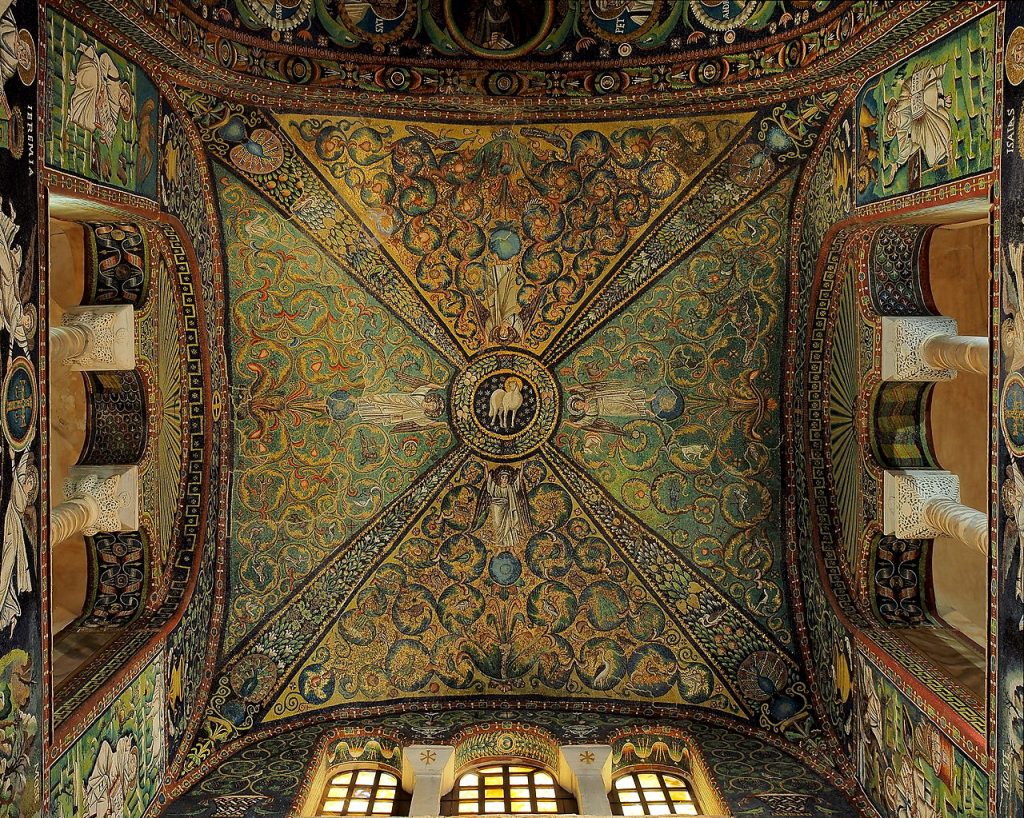
- Constructed: 547 CE
- Emperor: Justinian I
Similar to The Basilica of Saint'Apollinare Nuovo, The Basilica of San Vitale is a church built by the Byzantines in Ravenna. During the middle of the sixth century, the Byzantine Empire was reaching a high point, afterwards acquisition parts of Italia, Due north Africa, and Spain under the rule of Justinian the Great. All of the wealth and prosperity generated in these conquests helped to fund big-calibration building projects throughout the Byzantine Empire. The Basilica of San Vitale is a great case of a centrally planned church, a pop building typology in Byzantine Architecture. The church, like a lot of other religious buildings on this list, is famous for its exquisite Byzantine Mosaics. The mosaics in this church contain some of the greatest depictions of Emperor Justinian the Great and his wife Theodora. Today, the Basilica of San Vitale, along with many other notable Byzantine sites located in and around Ravenna, are listed as UNESCO World Heritage Sites.
5. Basilica Cistern – Istanbul, Marmara, Turkey
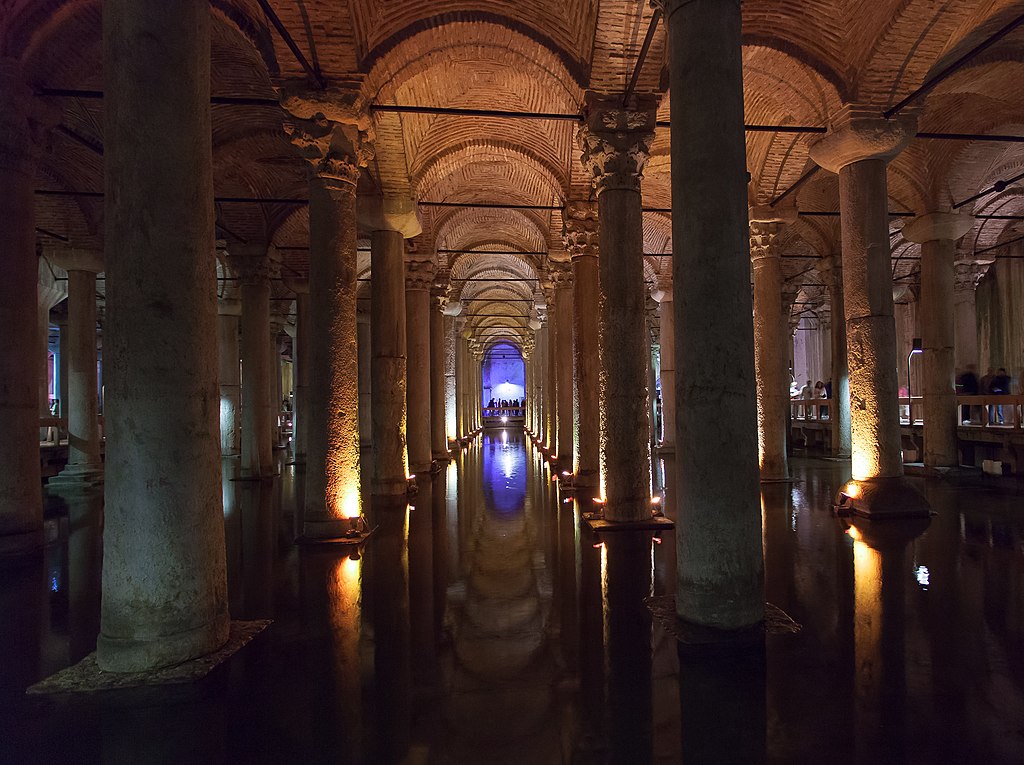
- Constructed: 532 CE
- Emperor: Justinian I
You wouldn't know it while walking effectually the streets of Istanbul just exterior the Hagia Sophia, just beneath your feet is a massive underground water storage tank. This cistern named the Basilica Cistern due to its proximity to an older basilica, is an incredible example of Byzantine infrastructure and urban planning. The enclosed infinite is truly massive, able to concur 2,800,000 cubic feet of water or about 32 Olympic size pond pools worth of liquid. The cistern provided h2o to much of the city, including the emperor's purple residence. Within the cistern, there are 336 marble columns, some of which are richly decorated with column capitals, medusa heads, and ornate carvings. Today the Basilica Cistern is open to the public and visitors tin can walk on elevated pathways in-between the vast network of columns.
half dozen. The Heptapyrgion and Walls of Thessaloniki – Thessaloniki, Republic of macedonia, Hellenic republic

- Synthetic: 390 CE (+/-)
- Emperor: Theodosius I
Thessaloniki was a leading city within the Byzantine Empire. It was an important seaport and contained a formidable fortification arrangement rivaling that of the Byzantine capital, Constantinople. These walls were largely built during the reign of Theodosius I, around 390 CE. Over the centuries a lot of the walls were added to and modified. Thessaloniki, like many other cities throughout Greece, independent an Acropolis. The Acropolis of Thessaloniki was located at i of the highest points within the city limits. The walls began effectually the Heptapyrgion and stretched down to the harbor below. The Heptapyrgion was a castle-like structure that functioned as the cities major defensive citadel. Afterward on, when Thessaloniki was controlled by the Ottman Empire, the Heptapyrgion was expanded and eventually converted into a prison.
7. Basilica of Saint'Apollinare in Classe – Classe, Emilia-Romagna, Italy

- Synthetic: 549 CE
- Emperor: Justinian I
The Basilica of Saint'Apollinare in Classe is the third church on this list that was built past Justinian I in the surface area around Ravenna. In the 6th century, Classe located three miles (v km) from modern-mean solar day Ravenna, served every bit Ravenna's port. Architecturally speaking, Saint'Apollinare in Classe is very similar to its counterpart Saint'Apollinare Nuovo. The church is built in the Roman Basilica style with a linear structure, with the nave and aisles all pointing towards the chantry. The most meaning office of the basilica is the apse, which is lavishly decorated with Byzantine Mosaics.
8. Monastery of the Pantocrator – Istanbul, Marmara, Turkey
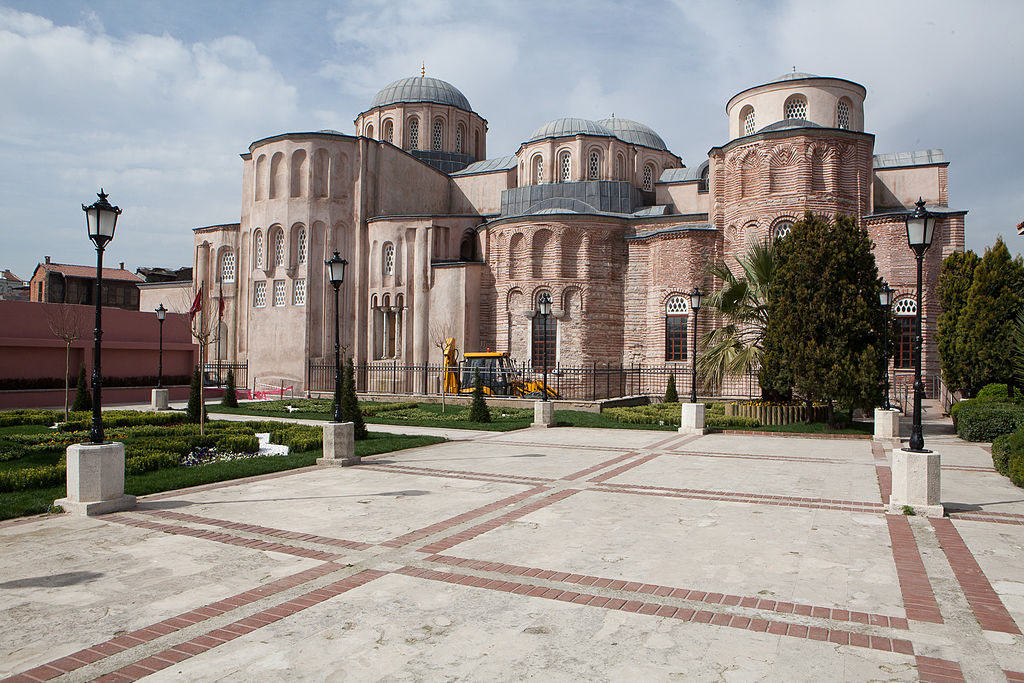
- Constructed: 1124 CE
- Emperor: John Ii Komnenos
The Monastery of the Pantocrator is the second-largest Byzantine Religious edifice that still exists in Istanbul. The Monastery is really fabricated up of 2 split churches and a smaller chapel. These buildings were all constructed using brick masonry, with mortar joints that are much wider than the bricks themselves. This technique was typically used in Byzantine Architecture from this period and tin be seen in many different buildings all over Greece, Anatolia, and the Balkans. After the Ottoman conquest of Constantinople, the Monastery was converted into a mosque, and it remains equally such to this day. Now called the Zeyrek Mosque, the interior of the building more than closely resembles other mosques in Istanbul, simply traces of the older Byzantine Architecture can still be seen.
ix. Ankara Castle – Ankara, Central Anatolia, Turkey
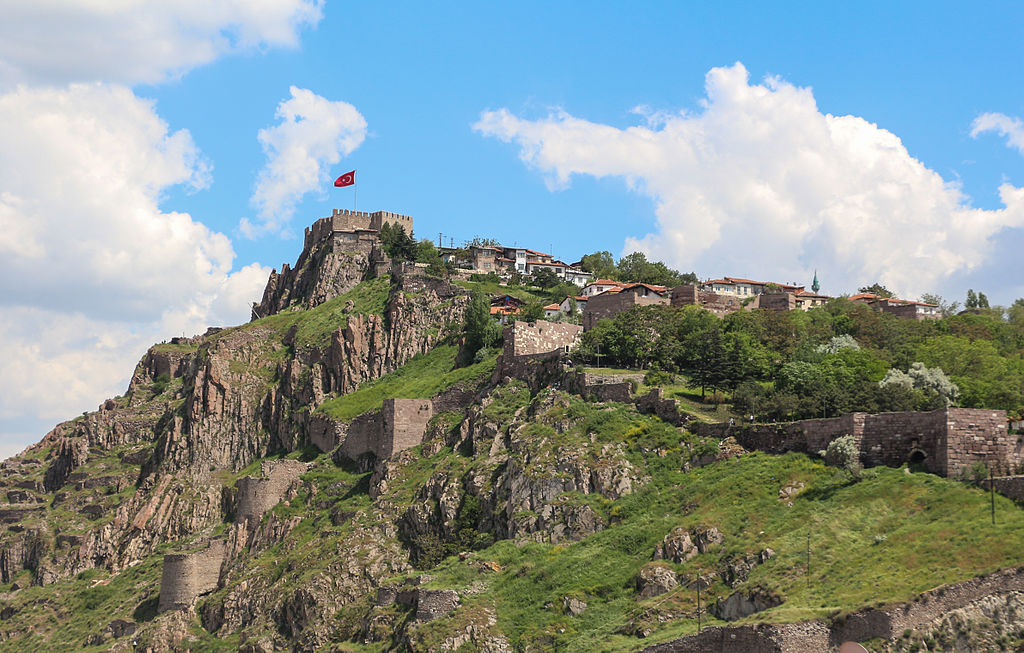
- Constructed: 641-668 CE
- Emperor: Constans I
Ankara Castle is a big hilltop fortification located in Ankara, the modern capital of Turkey. Although the original construction date is unknown, many historians believe information technology was during the reign of Emperor Constans Two. Ankara Castle is located in the center of the sometime city, on top of a loftier point that provided views to all of the surrounding areas. The castle is a typical example of military construction from the time period and was built past the Byzantines to help secure the eastern edges of their empire. Today Ankara castle is a highly visited attraction inside the otherwise modernistic metropolis of Ankara.
x. Our Lady of Saidnaya Monastery – Saidnaya, Rif Dimashq Governorate, Syria
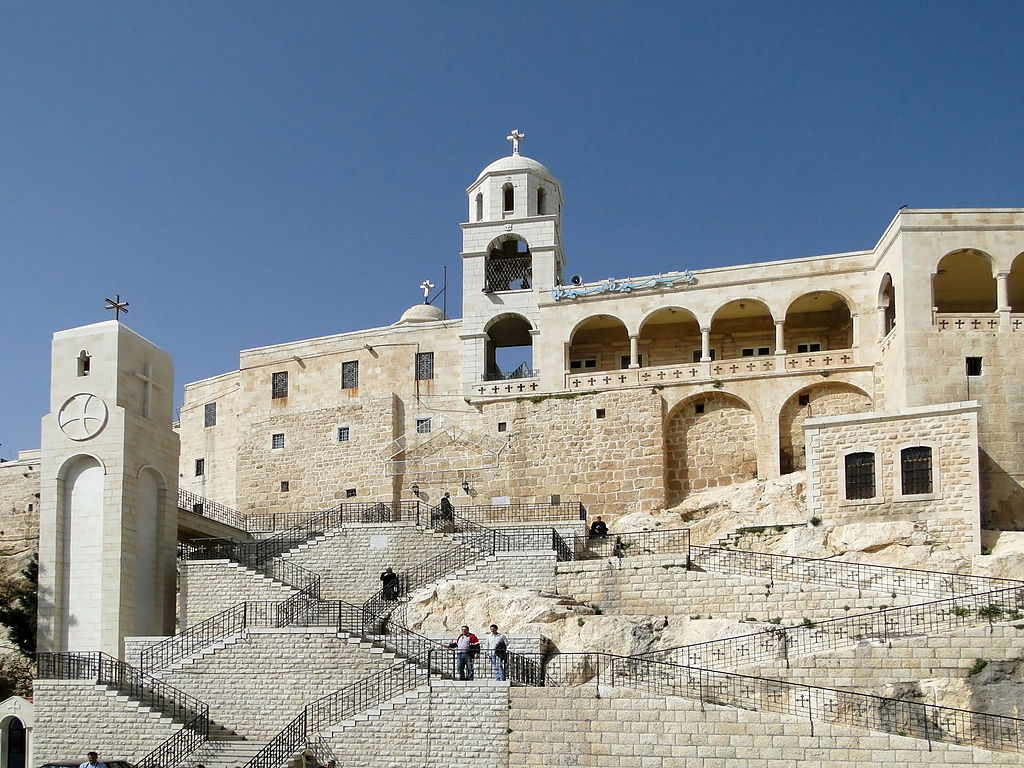
- Synthetic: 547 CE
- Emperor: Justinian I
Although Byzantine control of Syrian arab republic was relatively short-lived when compared to their control of modernistic-day Hellenic republic and Turkey; the Byzantines were still able to create several slap-up works of compages in the region. I of the virtually impressive examples of Byzantine Architecture in Syria is The Our Lady of Saidnaya Monastery. The monastery, like so much of the buildings on this list, was created during the rule of Justinian I, also known as Justinian the Great. Throughout the middle ages, Our Lady of Saidnaya Monastery was an important pilgrimage site, visited by many on the road to Jerusalem. Unfortunately, portions of the building were damaged during the modernistic Syrian Ceremonious State of war, but overall the edifice is nonetheless wonderfully preserved despite its historic period.
Like Architecture of Cities? Sign up for our mailing list to get updates on our latest articles and other data related to Architectural History.
11. Hippodrome of Constantinople – Istanbul, Marmara, Turkey
(right) Walled Obelisk
- Constructed: 3rd-4th centuries CE
- Emperor: Varies
Chariot racing was a popular pastime in both the Roman Empire and the Byzantine Empire. Just similar with gladiatorial gainsay, chariot racing required a large venue to agree the spectators. There are several racetracks all over the remnants of the Roman Empire, most notably the Circus Maximus in Rome and the Hippodrome of Constantinople. Roman chariot races were a popular culling to Gladitorial Games which were held at Roman Amphitheaters. The hippodrome was used for centuries, with much of the construction occurring in the third and 4th centuries, nether the reigns of Septimius Severus and Constantine I. Today not a lot of the original structure of the Hippodrome remains, but the overall oval shape of the racetrack tin be seen in Istanbul's Sultanahmet Square. The best-preserved relic from the Hippodrome of Constantinople is the Obelisk of Thutmose III. The obelisk, which dates from 1490 BCE, was brought to Constantinople by Emperor Theodosius I in 390 CE. At the other finish of the racetrack is a monument known equally the Walled Obelisk, a massive brick and mortar obelisk that was one time completely covered with a marble veneer, although today but the bricks remain.
12. Monastery of Saint John the Theologian – Chora, Patmos, Greece

- Synthetic: 1088 CE
- Emperor: Alexios I Komnenos
The Byzantine Emperor Alexios I Komnenos gave the Isle of Patmos to a grouping of monks in the belatedly 11th century. Those monks rapidly began building a massive fortified monastery. It's named for Saint John of Patmos, who is believed to have written several books within the bible. The living spaces inside the building are completely surrounded by defensive walls which tower over the boondocks below. Today Monastery of Saint John the Theologian is still a functioning monastery, and it was inscribed equally a UNESCO Globe Heritage Site in 1999.
13. Hagia Sophia – Trabzon, Black Ocean Region, Turkey

- Constructed: 1238-1263 CE
- Emperor: Manuel I
Hagia Sophia, meaning sacred wisdom, was a common name for a religious edifice within the Byzantine Empire. The Hagia Sophia in Trabzon Turkey is not virtually as impressive as the 1 in Istanbul, but it is yet a great example of Byzantine Architecture. Construction began in 1238 and at this time Trabzon, formerly known every bit Trebizond, was actually part of a split nation, known every bit the Empire of Trebizond. The Empire of Trebizond formed after the Sack of Constantinople in 1204. Today the Hagia Sophia of Trabzon stands only about 1500 feet (450 meters) from the shores of the Blackness Sea and is one of several notable Byzantine buildings within the modern city.
14. Sumela Monastery – Maçka, Black Ocean Region, Turkey

- Constructed: 13th century CE
- Emperor: Varies
Nestled on a steep cliff face 28 miles (46 km) north of Trabzon Turkey, the Sumela Monastery is a religious building that was founded in 386 CE, during the reign of Theodosius I. The building was abandoned and rebuilt several times over the centuries, including during the reign of Justinian I. Virtually of the architecture that we run across today dates from the time of the Empire of Trebizond, a successor land of the Byzantines that flourished from the 13th to xvth centuries. The monastery utilizes a big natural cave in the side of the cliff which creates a secluded space. After the expanse around Sumela Monastery was conquered past the Ottoman Turks, the Ottoman Sultans granted special freedoms to the monastery and its inhabitants. This allowed it to flourish equally a eye of civilization and learning while still nether Turkish rule.
Interested in the architecture of Ancient Rome? Here are some of our related manufactures:
15. Karaman Castle – Karaman, Mediterranean Region, Turkey

- Constructed: 11th-12th century CE
- Emperor: Varies
Karaman Castle is a large medieval castle fortification located in Karaman, Turkey. The original construction engagement for the castle is unknown, but historians believe it was built over a long period from the 11th to 12th centuries. The castle had three concentric rings of walls, the innermost being the tallest and strongest. In the late 12th century Karaman was captured by the Seljuk Turks, and the Byzantines retreated back toward their uppercase, Constantinople. Today the Castle is a popular tourist destination inside the city of Karaman, and the surface area within the walls is used as a public park.
xvi. Euphrasian Basilica – Poreč, Istria State, Croatia
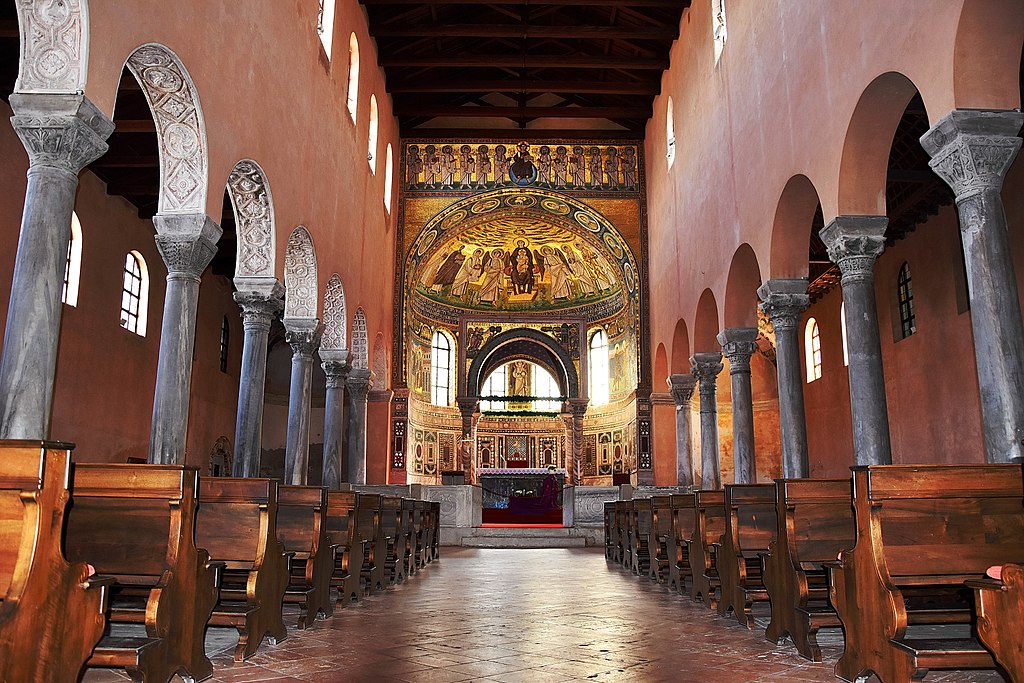
- Constructed: 553 CE
- Emperor: Justinian I
Another work of Byzantine Architecture from the gilded age of the empire is the Euphrasian Basilica. Built under the dominion of Justinian I, the church is one of the best examples of Byzantine Building in all of modernistic Croatia. The church itself, like to others in Ravenna, has a linear basilica-style floorplan. The apse of the church is known for its specially striking Byzantine Mosaics. Although mosaics had been used for thousands of years, the Byzantines made sure technological advances to the arts and crafts. Byzantine Mosaics were extremely influential amidst several other art forms over the centuries.
17. Hagios Demetrios – Thessaloniki, Macedonia, Greece
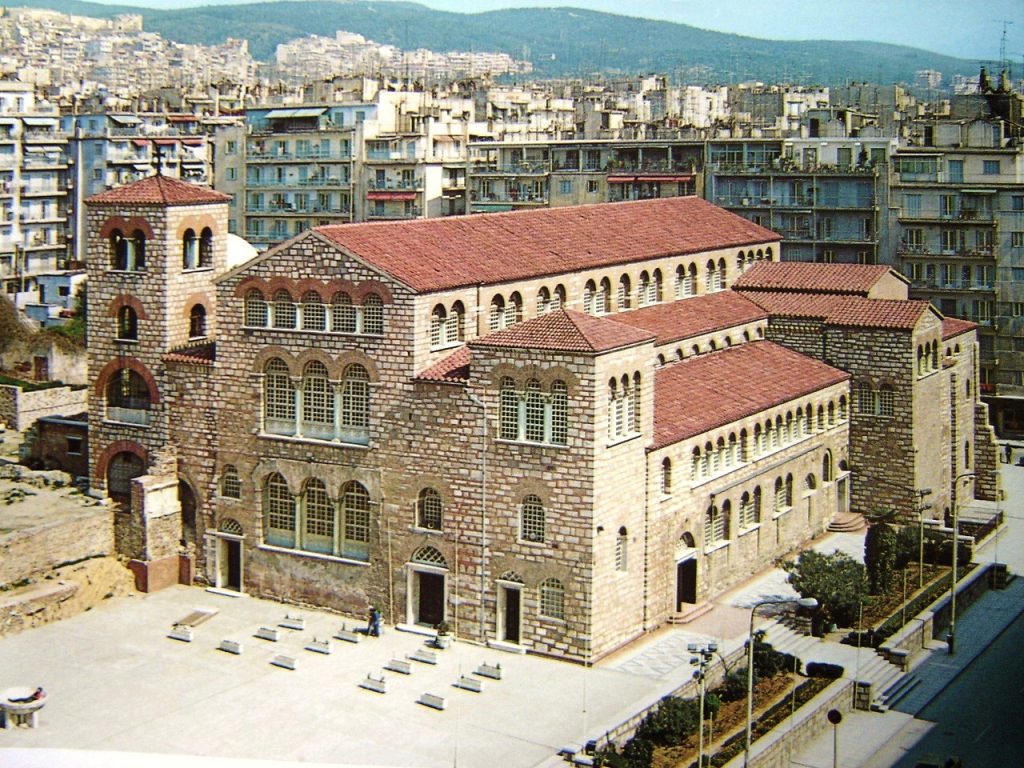
- Synthetic: 629-634 CE
- Emperor: Heraclius
The Hagios Demitrios, also known as The Church of Saint Demetrius, is arguably the most important religious building in Thessaloniki. The church was named for the patron saint of the urban center, Saint Demetrius. The overall design is a five aisled basilica, which is unique as many of the Byzantine Basilicas that survived to modernistic times have three aisles. The church contains a few examples of Byzantine Mosaics, just unfortunately, much of the interior decorations were lost during the Ottoman Menses, when the edifice was converted into a mosque. During the great Thessaloniki fire of 1917, the church was critically damaged. Today the church is only standing thank you to a massive rebuilding project that took identify subsequently the fire.
eighteen. Chora Church – Istanbul, Marmara, Turkey

- Constructed: 11th century CE
- Emperor: Alexios I Komnenos
The Chora Church building is another great example of Byzantine Architecture located within the urban center of Istanbul. The church building was nicknamed Chora Church, to signal information technology was built outside the defensive fortifications in the 4th century CE. However, the Theodosian wall, congenital in the 5th century, enclosed the church and surrounding areas. The compages of the church that we run into today was rebuilt in the 11th century later on the previous building was damaged in an earthquake. The mosaics are some of the best-preserved in Istanbul, although they have seen a lot of erosion over time. Over the past 70 years, experts have been painstakingly restoring the Chora Church and all of its interior decorations. Even though the Chora Church has a relatively small footprint compared to other impressive buildings in Istanbul, the mosaics and intricate stonework within are well worth a visit.
xix. Sangarius Bridge – Adapazarı, Marmara, Turkey

- Constructed: 562 CE
- Emperor: Justinian I
The Sangarius bridge is one of a handful of surviving bridges congenital past the Byzantine Empire. During the reign of Justinian I, the bridge was congenital over the Sakarya River. The bridge spans over 1400 feet (429 meters) and sits on 7 larger key arches and v smaller outer arches. It was built using the aforementioned techniques as many other medieval bridges that were built afterward on. Justinian the Great commissioned the span as a way to make travel to the eastern provinces of the empire easier. The span allowed troops and supplies to brand their fashion from the capital out toward Anatolia much faster. Although most of the bridge used to be over the broad Sakarya River, the grade of the river has inverse over the centuries and now well-nigh of the bridge sits over dry land.
xx. Hagia Sophia – Thessaloniki, Republic of macedonia, Greece
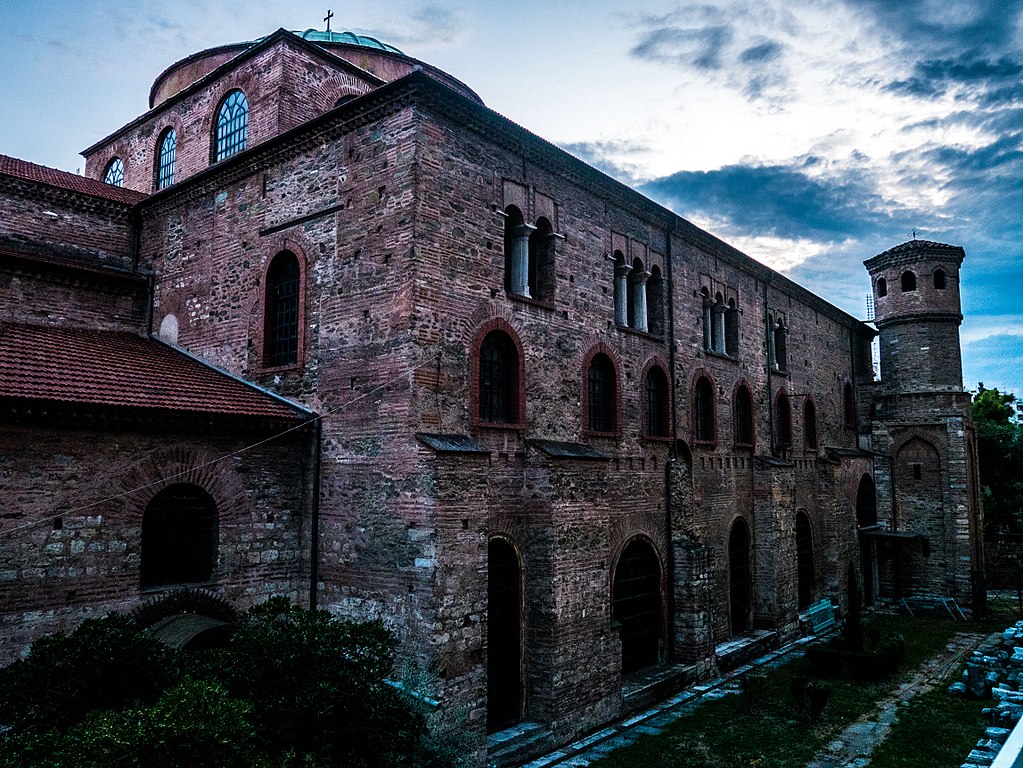
- Constructed: 690-730 CE
- Emperor: Leo Iii
The third church titled "Hagia Sophia" on this listing, the Hagia Sophia in Thessaloniki is another fantastic case of early Byzantine Architecture. The church building was completed during the reign of Leo Iii. The Hagia Sophia of Thessaloniki is built using a Greek Cross-type program, replicating several other churches throughout the Byzantine Empire. Although partially destroyed in the great burn of Thessaloniki in 1917, much of the original stonework and mosaics remain. The dome, roof, and many interior decorations were rebuilt afterward the fire. Today, forth with several other historic buildings, the church is part of a group of UNESCO Listed Sites in Thessaloniki.
21. Castle of Mytilene – Mytilene, Isle of Lesbos, Greece
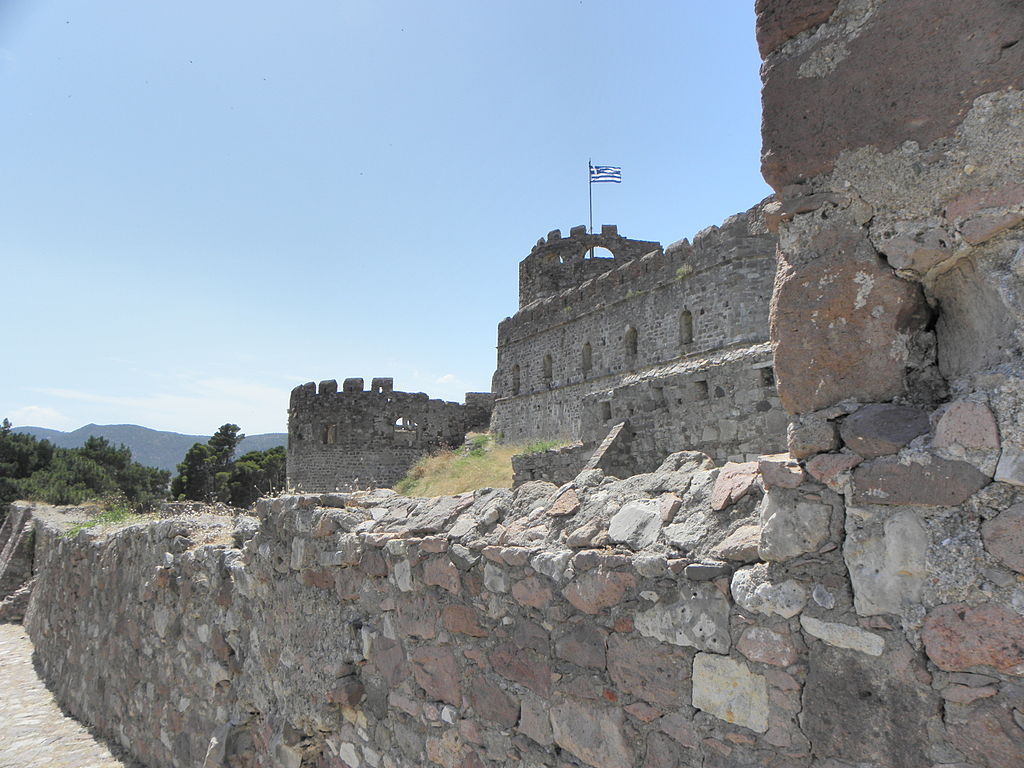
- Synthetic: 1373 CE
- Emperor: John V Palaiologos
The Castle of Mytilene is a medieval fortress located on the Greek Island of Lesbos in the Aegean Sea. The castle has a complex history, with layers of walls and towers congenital in the 6thursday century under Justinian I, the 14th century under John V, and in the 17th and xviiithursday centuries under the Ottoman Empire. The seaside fortress the virtually formidable fortification on the unabridged island. The castle grounds have up more than 60 acres of land (0.4 hectares) making it ane of the largest castles in the Mediterranean Body of water.
22. Fortifications of Trebizond – Trabzon, Black Ocean Region, Turkey
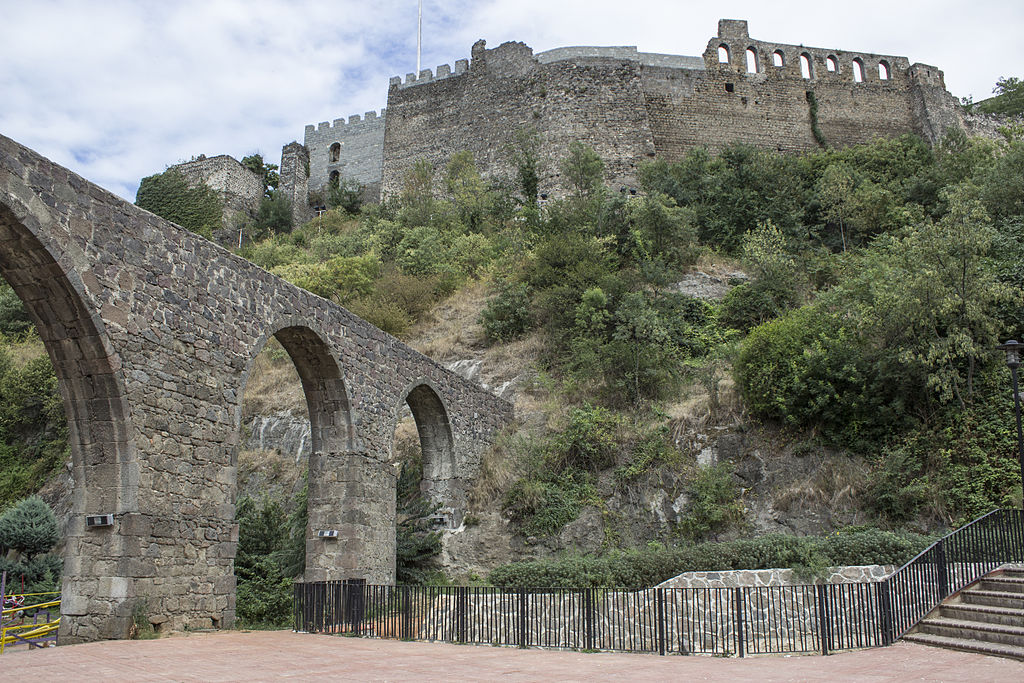
- Constructed: 11th-15th century CE
- Emperor: Varies
The fortifications of Trebizond were a serial of walls, towers, gates, and bridges that all surrounded the medieval center of the metropolis. Information technology's nearly impossible to give an exact date to their construction as they were modified over the centuries. Some portions engagement from the Roman period, but much of the structure was too done during the reign of the Byzantine Empire, as well as the Empire of Trebizond. The Empire of Trebizond was a successor state to the Byzantine Empire that functioned as a dissever entity equally the Byzantines were failing in the late middle ages. At the fourth dimension the walls were built, Trebizond was one of the largest seaports in the Black Sea.
23. Theodosius Cistern – Istanbul, Marmara, Turkey

- Constructed: 443 CE
- Emperor: Theodosius Two
Merely like the Basilica Cistern listed above, the Theodosius Cistern was a large hugger-mugger bowl meant to store water for the ancient city of Constantinople. The cistern was built by Emperor Theodosius II and the h2o was supplied by the Valens Aqueduct. The roof of the cistern is supported by 32 marble columns continued by vaults and arches to support the street level of Istanbul above. Today the cistern is open to the public after a restoration projection that took virtually a decade. The cistern itself looks well-nigh like a cyborg of some sort, with various metal bars and rings added to all of the columns in guild to provide extra support to the 1500-yr-quondam structure.
24. Castle and City of Mystras – Mystras, Peloponnese, Greece
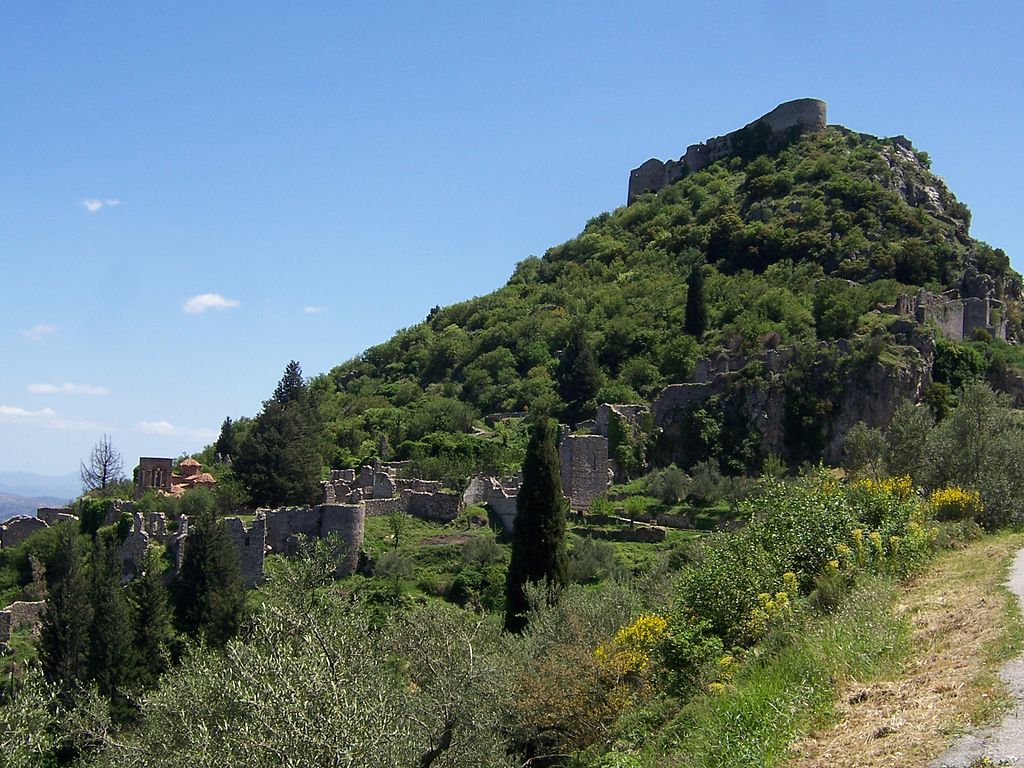
- Constructed: 1248-1460 CE
- Emperor: Varies
Mystras was a leading fortification and metropolis inside the Byzantine Empire. The founding of the city was actually during a tumultuous fourth dimension for the Byzantines. The empire was substantially dismantled in the early on 13th century when various western European powers sacked the city of Constantinople during the 4th Cause. But eventually, the remnants of the Byzantines restructured and took back Constantinople and re-established the former Byzantine Empire. It was during this flow in the late eye ages that the city of Mystras began to thrive as a center for compages, culture, and commerce. Within the shadow of the hilltop castle, a modest community grew into a prosperous city. Mystras began to decline during the reign of the Ottoman Empire and was essentially abandoned in the 19th century. Today Mystras contains great examples of Byzantine Architecture, including some well-preserved churches, as well equally the remnants of the castle and other fortifications.
25. Hagia Irene – Istanbul, Marmara, Turkey
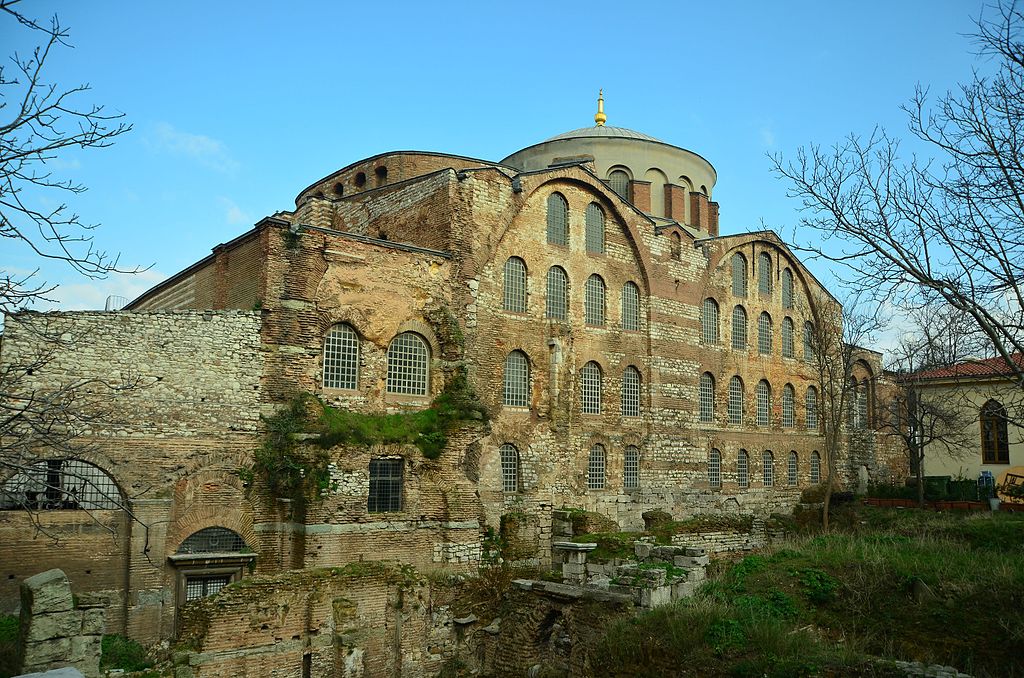
- Constructed: 548 CE
- Emperor: Justinian I
The Hagia Irene is one of the oldest churches within modern-day Istanbul. The church was built on the foundation of an earlier pagan temple dating from the days of the Roman Empire. The first church was built on this spot during the reign of Emperor Constantine I, but it later burned down in 532 CE. Emperor Justinian I, had the church rebuilt shortly after its destruction. Although significantly smaller than the nearby Hagia Sophia, The Hagia Irene is very similar in style and construction. The church is built from a series of arches and vaults, which hold upwards a large dome. This technique was revolutionary at the time and was replicated constantly throughout Byzantine Architecture. Today the Hagia Irene is completely enclosed inside the walls of the Topkapı Palace, the Purple Residence of the Ottoman Sultans which was built about one thousand years after the Hagia Irene.
Influences of Byzantine Architecture
The Byzantine Empire was one of the most powerful and influential empires in history. They can clearly be seen equally a continuation of the once-mighty Roman Empire, and although not equally well known as their Latin counterparts, the Byzantines still left their mark on history and on architecture. Fifty-fifty later on the collapse of the empire in the 15th century, Byzantine Architecture influenced building and art fifty-fifty upwards until today. Iii of the most notable examples of the architectural influences of the Byzantines are Byzantine Fashion Mosaics, Orthodox Churches, and the architecture of the Ottoman Empire.
Byzantine Mosaics were replicated countless times throughout the Mediterranean and beyond. The Norman Cathedral of Monreale in Sicily and Saint Marker's Basilica in Venice are two incredible buildings that both utilize the Byzantine Mosaic Technique. Although they are not Byzantine Buildings if you stand in either one of these you are reminded of many of the Byzantine Basilicas mentioned above.

Eastern Orthodox Churches are ane of the most popular types of religious buildings on Earth. These churches can exist establish throughout Eastern Europe, the Balkans, and beyond including The United States and Latin America. Churches such every bit Alexander Nevsky Cathedral in Sofia Bulgaria clearly show a heavy influence of Byzantine Architecture. The church was built more than than 400 years after the fall of the Byzantine Empire, and yet reflects back to Byzantine Churches that were built in the 5thursday century.

Photo by Deensel from Wikimedia Eatables
The Ottoman Empire, which took over much of the former territories of the Byzantine Empire, built some of the near impressive mosques in the world today. Within Istanbul lonely, at that place are almost 3,000 mosques, most of which borrow elements from Byzantine Architecture. Two of the largest Mosques ever built by the Ottoman Empire, Süleymaniye Mosque and Sultan Ahmed Mosque, both greatly resemble the Hagia Sophia.
(right) Hagia Sophia
The geometry in both buildings is almost identical. The weight of the central dome is dispersed downwards and outward using arches and vaults.
Ottoman architects studied the Hagia Sophia and other Byzantine Churches, in order to empathize the geometry and engineering which would permit them to build buildings with huge open interior spaces. Creating a massive interior space with a tall ceiling height, was almost impossible without using interior columns for support. But the Byzantines, post-obit Ancient Roman architectural traditions, were able to use complex geometry and devise a way to make a big dome spread its load outward through arches and vaults to create an open interior space.
Byzantine Compages today
Examples of Byzantine Architecture tin can be establish throughout the earth we live in today. If information technology wasn't for the success of the Byzantine Empire and the structures they left behind, modern architecture would be extremely different. Whether you think of them as Romans, or something else, the Byzantines were an impressive civilization that revolutionized the globe of architecture.

- About the Author
- Rob Carney, the founder and lead writer for Architecture of Cities has been studying the history of compages for over 15 years.
- He is an avid traveler and photographer, and he is passionate about buildings and building history.
- Rob has a B.S. and a Master's degree in Architecture and has worked as an architect and engineer in the Boston area for 10 years.
Like Architecture of Cities? Sign upward for our mailing list to get updates on our latest manufactures and other information related to Architectural History.
How can yous help Architecture of Cities?
- If you lot are interested in helping grow and improve Architecture of Cities, y'all tin can back up the states on Patreon!
- Condign a Patreon Supporter gets you early access to new articles – and everything we earn goes back into generating new content, improving our existing articles, and helping us create the best user experience for our readers.
- Special thanks to all of our electric current Patreon Supporters!

appersonculdrought1999.blogspot.com
Source: https://architectureofcities.com/byzantine-architecture
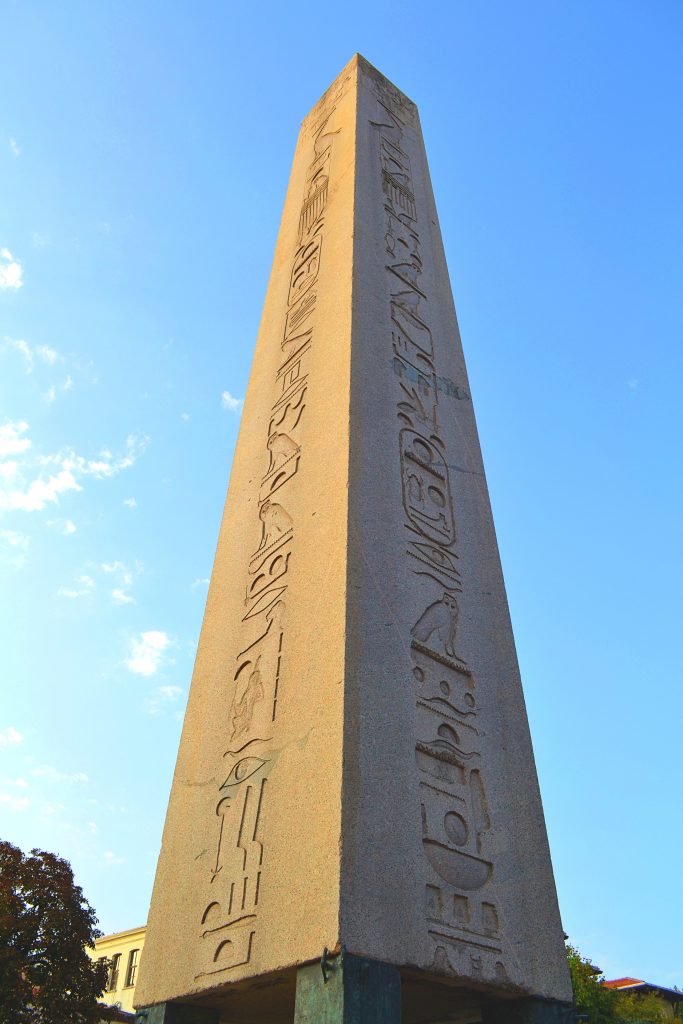
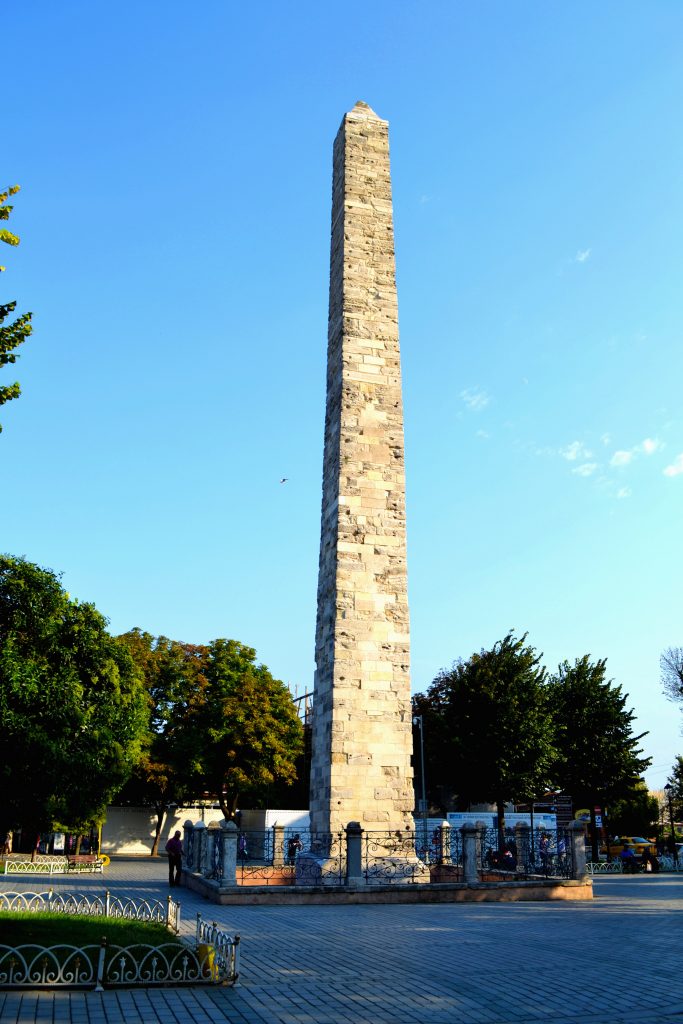
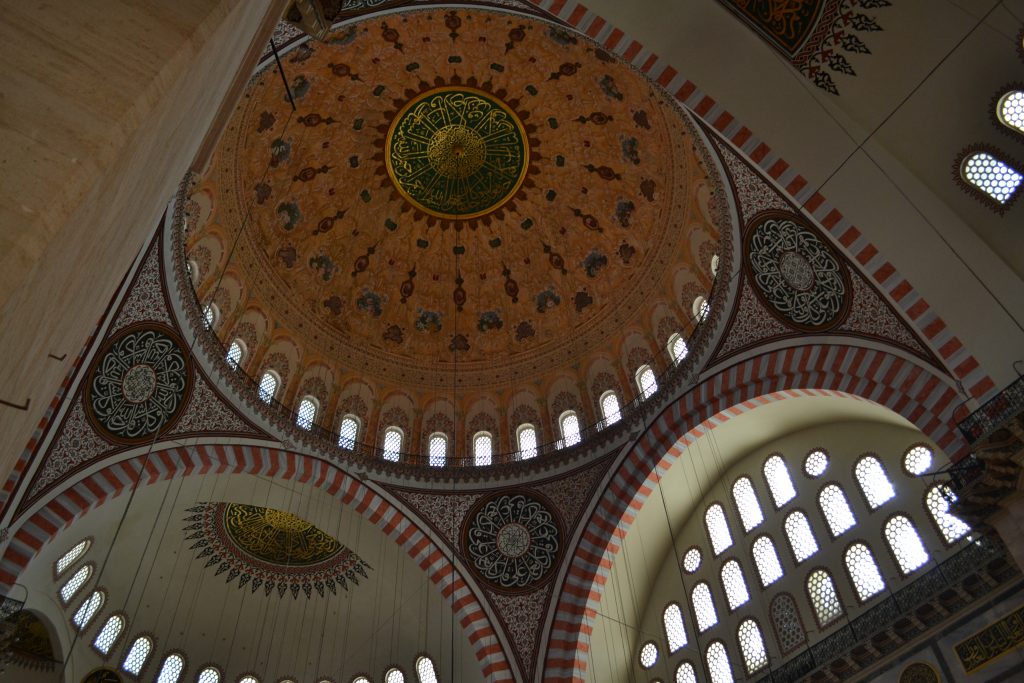
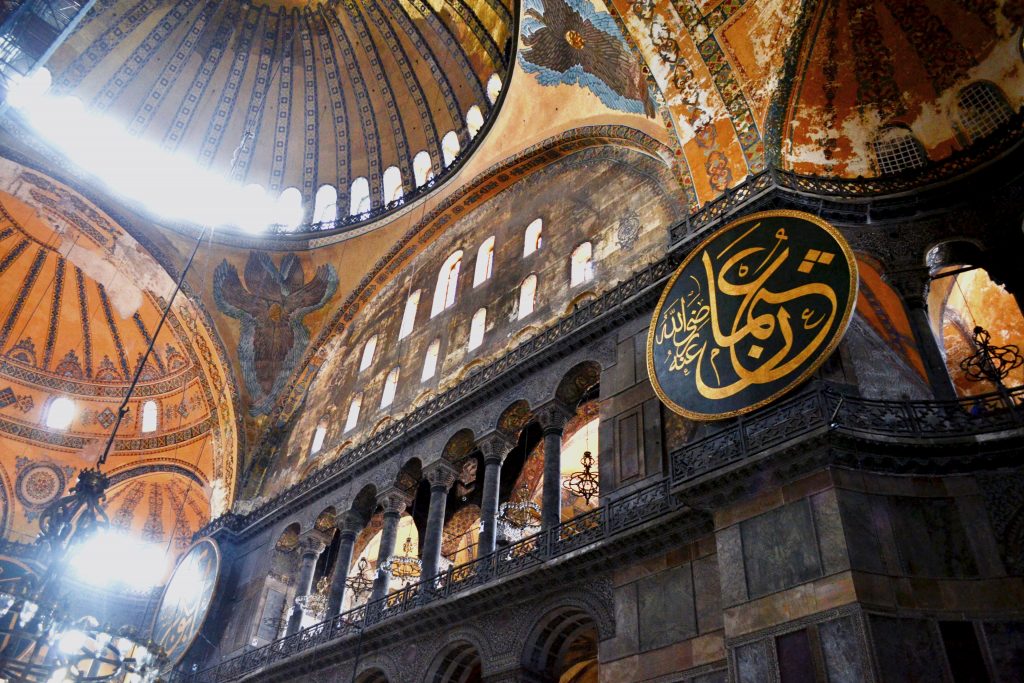
0 Response to "The Byzantine Empire Art and Architecture Compared to Medieval Europe"
Post a Comment